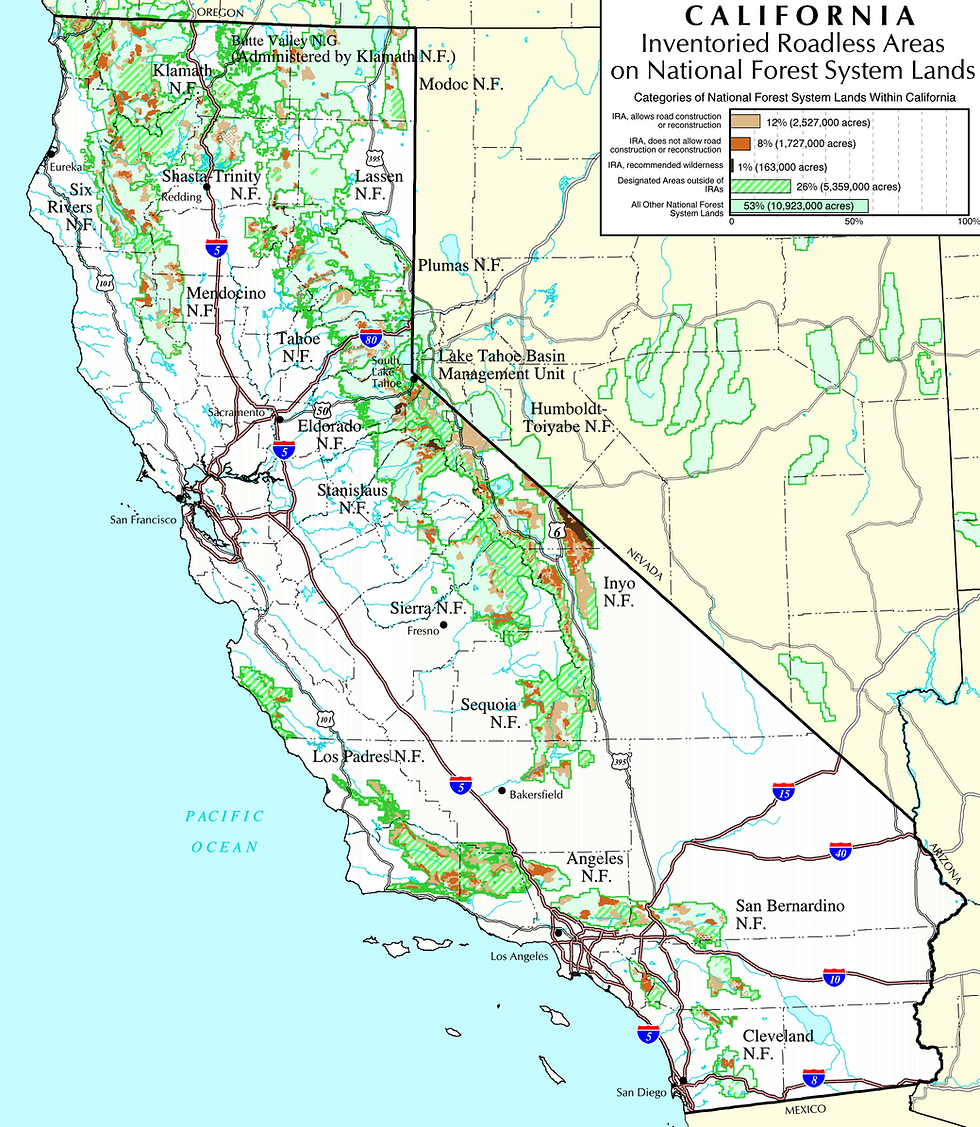EPIC And Others To Sue USFWS for Putting Northern Spotted Owls at Risk
- Jan 30, 2020
- 2 min read

Northern Spotted Owl. Photo by Frank D. Lospalluto.
On Friday, EPIC and a coalition of conservation groups notified the U.S. Fish and Wildlife Service of its intent to take the agency to court for is failure to complete an evaluation on the status of the northern spotted owl and whether the owl warrants greater protection under the Endangered Species Act. The notice letter begins a 60-day window for the Service to comply with the law by evaluating whether existing protections for the owl are sufficient to stave off extinction.
“The science is dire and alarming,” said Tom Wheeler, Executive Director of the Environmental Protection Information Center. “The Service’s failure to act is placing the northern spotted owl in danger of extinction. Urgent action is required now to avert tragedy.”
The northern spotted owl was first listed as “threatened” by the Service in 1990 because of range-wide population declines primarily caused by habitat loss from timber operations. Since the species listing, the northern spotted owl has been further impacted by the expansion of the more aggressive barred owl in its range. As the barred owl has moved south from British Columbia, the northern spotted owl declined precipitously. Today, northern spotted owls are functionally extinct in British Columbia and face extinction in the wild through the owl’s entire range within the next 50 years.
“Mature and old-growth forests that provide essential habitat for this species continue to be aggressively logged and removed,” said Nick Cady, Legal Director of Cascadia Wildlands. “Urgent action is needed by the Fish and Wildlife Service and is long overdue.”“The science is dire and alarming,” said Tom Wheeler, Executive Director of the Environmental Protection Information Center. “The Service’s failure to act is placing the northern spotted owl in danger of extinction. Urgent action is required now to avert tragedy.”
The Service has not completed a status review for the owl within the statutorily prescribed timeframe of five years, with the last status review completed in 2011. Similarly, the Service has failed to complete rulemaking concerning whether to “uplist” the owl from “threatened” to “endangered” despite the increasingly dire outlook for the species.
The Service’s failure to complete these actions has hurt the owl’s recovery in that the Service and other governmental agencies may be relying on outdated data. This is particularly troublesome as the Bureau of Land Management has already completed resource management plans for forests in the range of the northern spotted owl and as the U.S. Forest Service has begun its process to revise land and resource management plans for forests within the owl’s range.
The conservation groups include the Environmental Protection Information Center, Klamath-Siskiyou Wildlands Center, Western Environmental Law Center, American Bird Conservancy, Cascadia Wildlands, Oregon Wild, Pilchuck Audubon Society, Northcoast Environmental Center, Safe Alternatives for our Forest Environment, Forest Issues Group, Lassen Forest Preservation Group, Sierra Foothills Audubon Society, and South Umpqua Rural Community Partnership. The groups are represented by Susan Jane Brown of the Western Environmental Law Center.
Check out our full press release here.





Comments